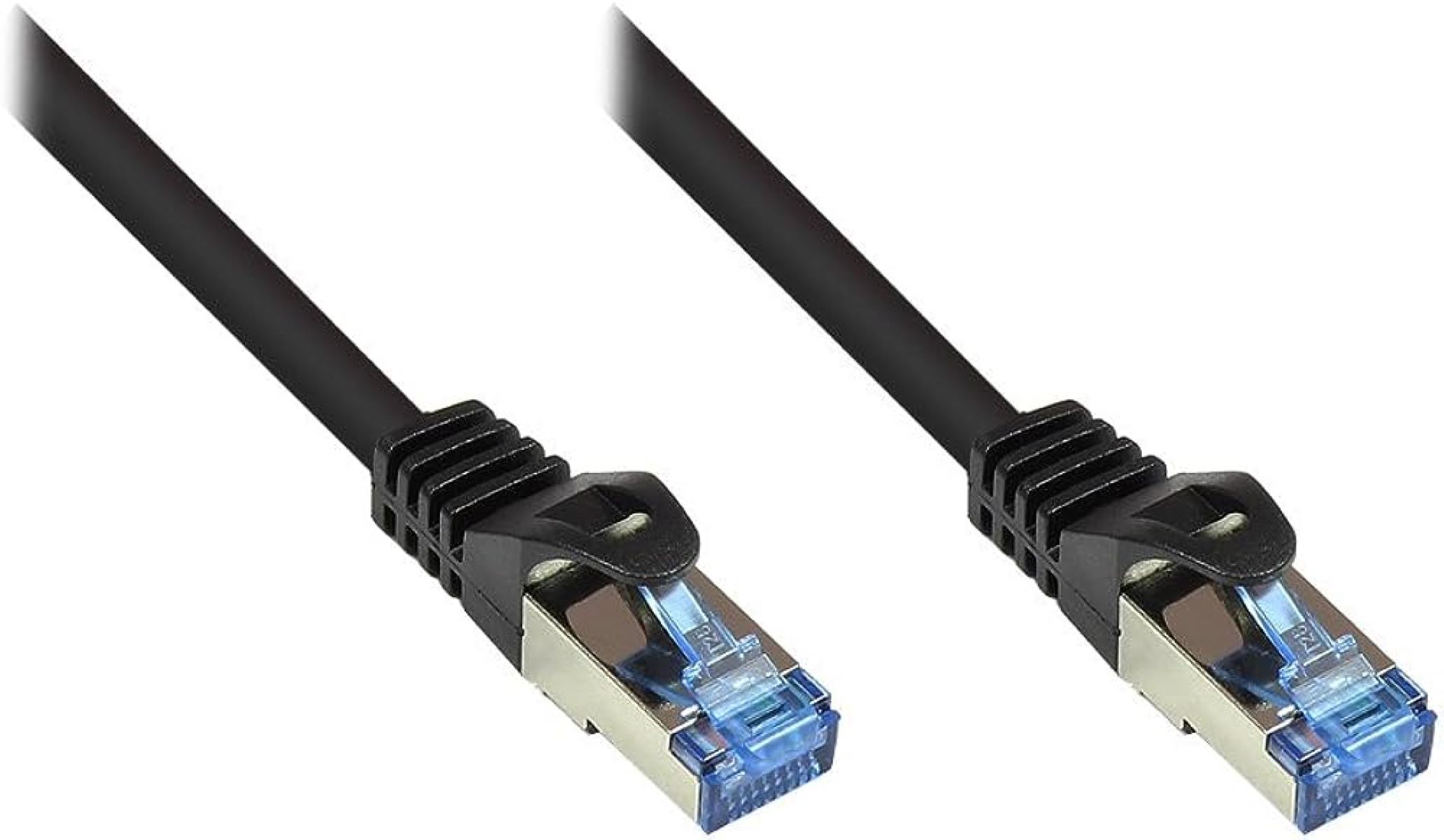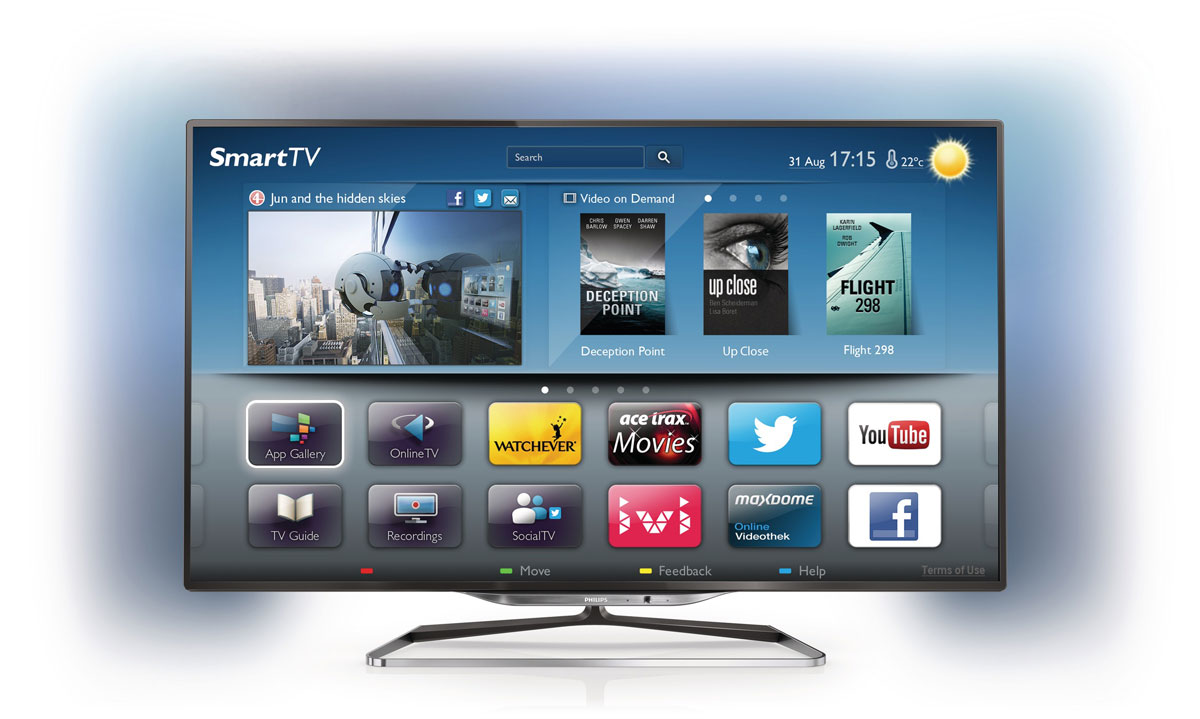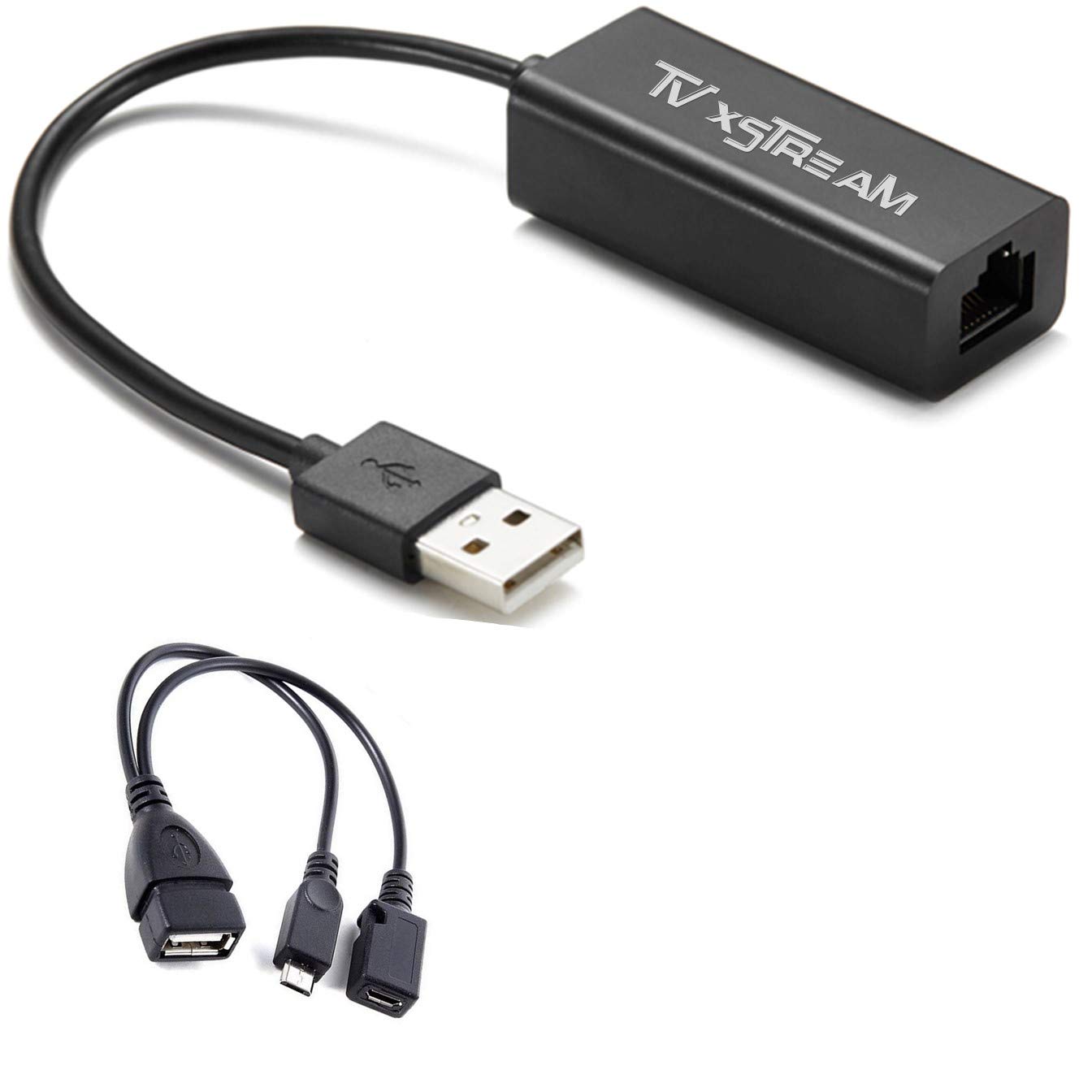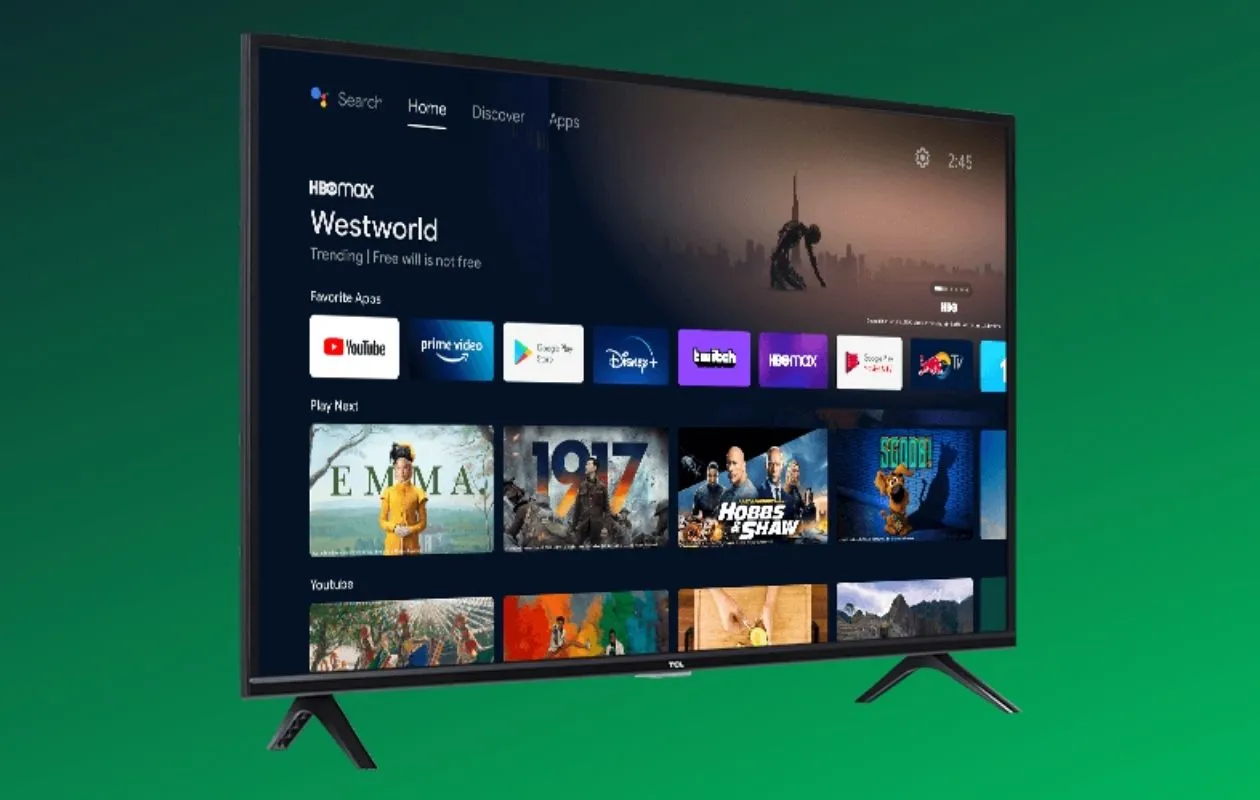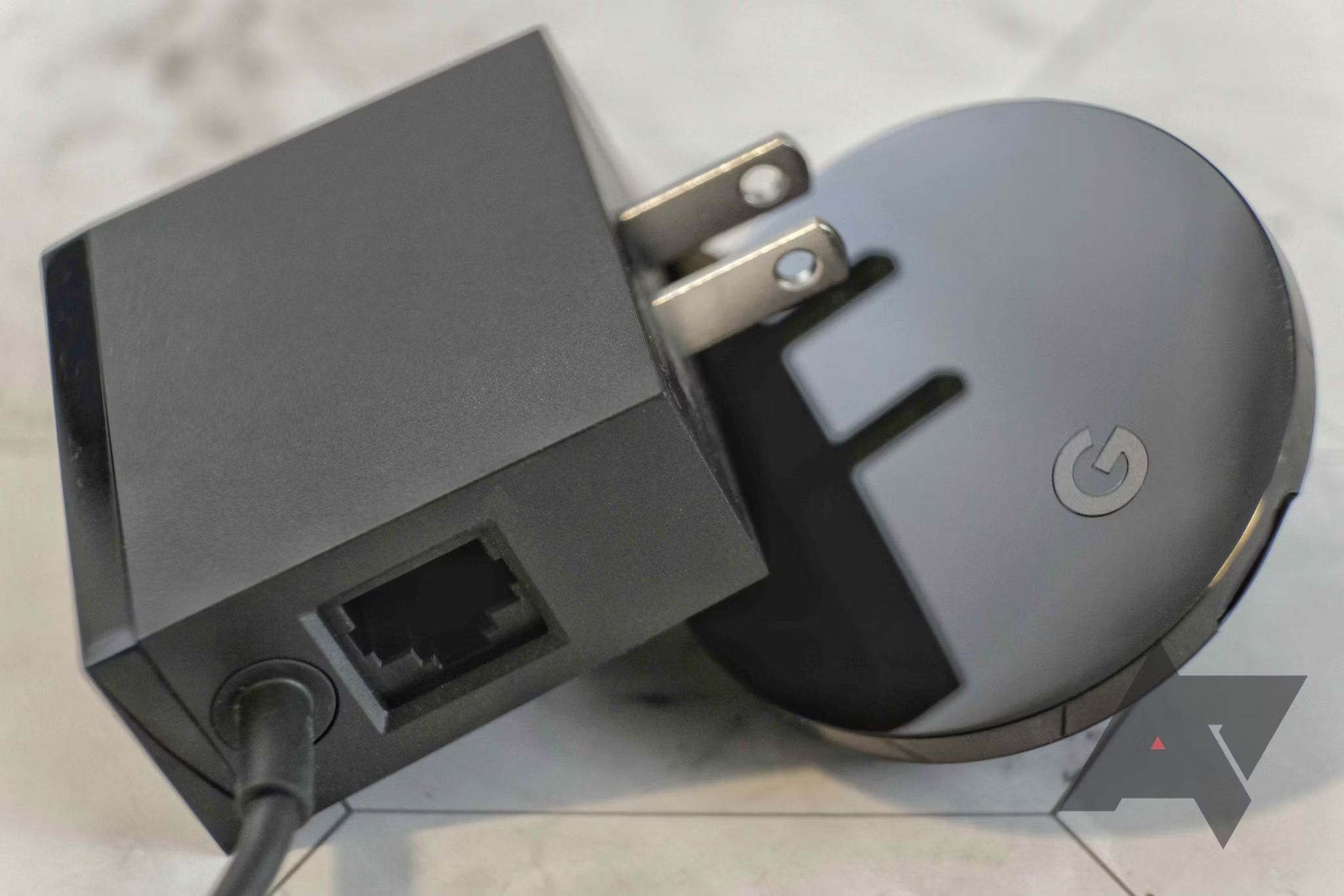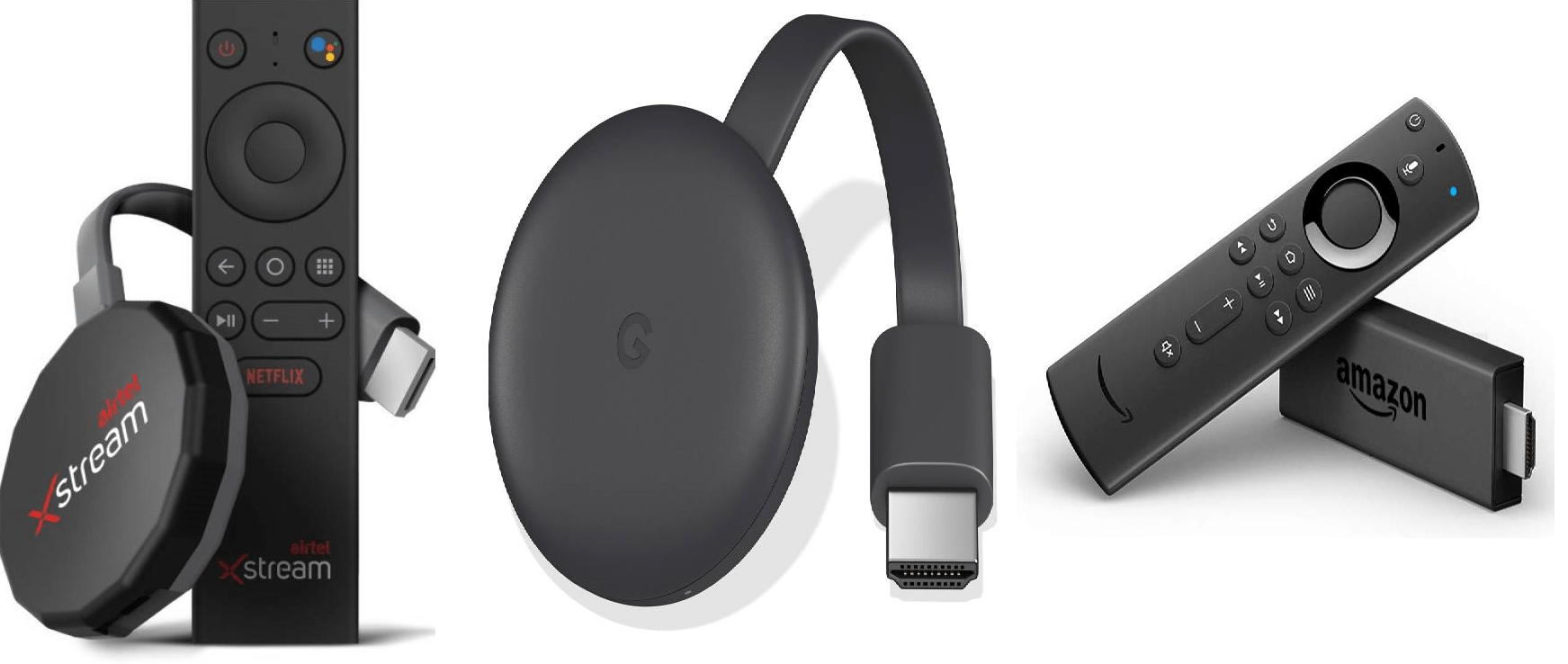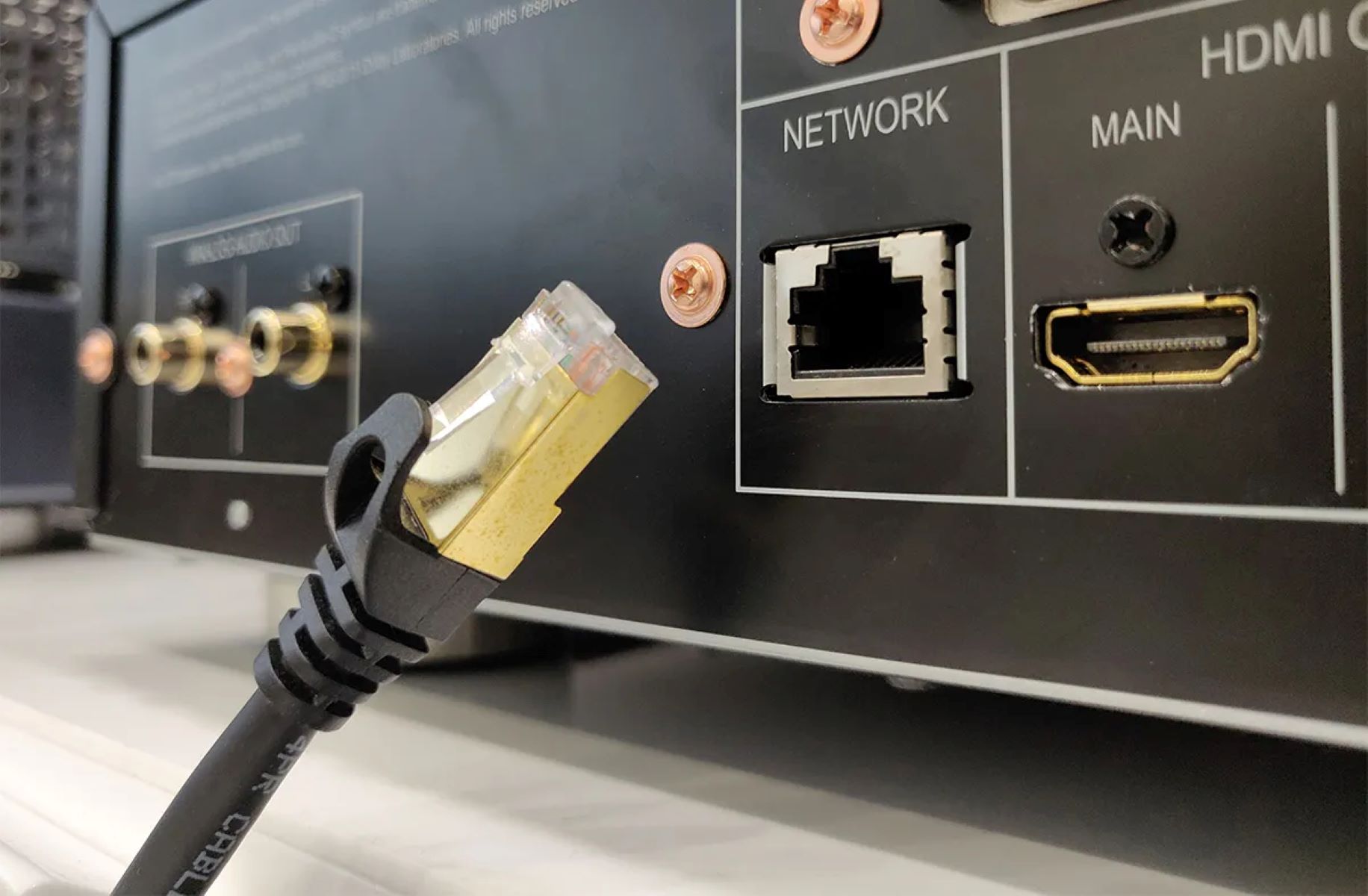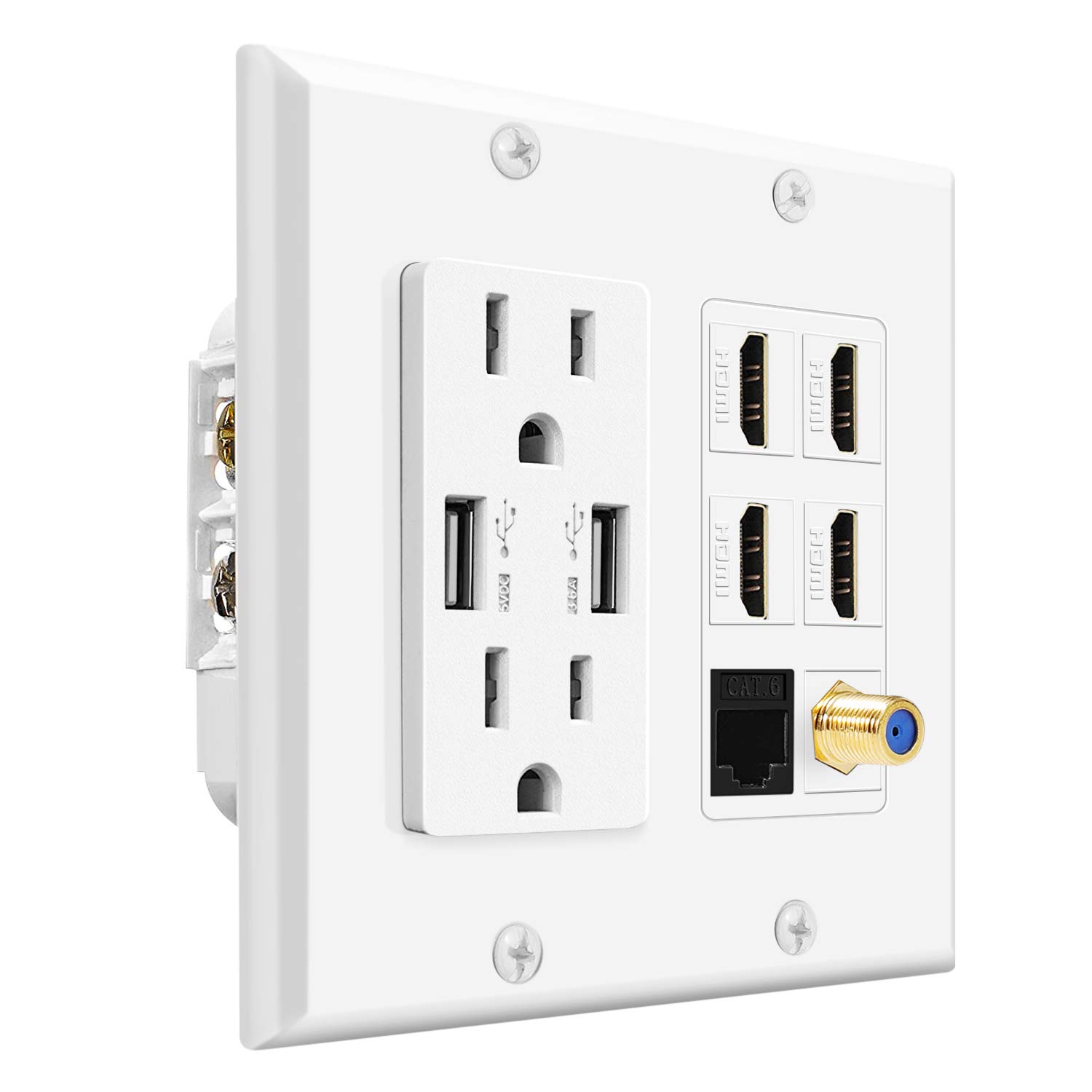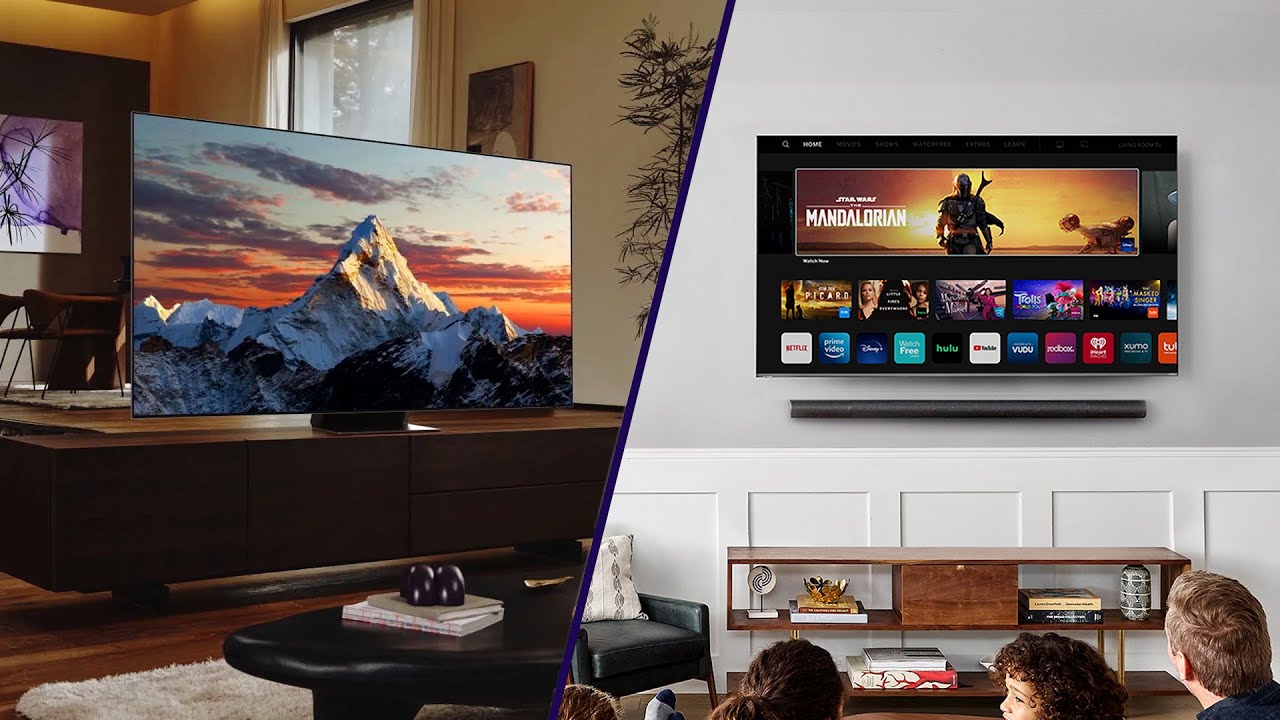Introduction
Welcome to the world of smart TVs and the endless entertainment options they offer. With a smart TV, you can stream your favorite shows and movies, browse the internet, and even connect with friends and family through social media. However, to truly unlock the potential of your smart TV and enjoy a seamless streaming experience, you need a reliable and fast internet connection. This is where an Ethernet cable comes into play.
An Ethernet cable, also known as a network cable, is a type of cable commonly used for wired internet connections. It allows you to connect your smart TV directly to your home network or modem, ensuring a stable and high-speed internet connection. While most smart TVs nowadays come with built-in Wi-Fi capabilities, using an Ethernet cable offers several advantages.
In this article, we will explore the world of Ethernet cables for TVs, their benefits, and how to set them up. Whether you are a die-hard movie lover, an avid gamer, or just want to stream your favorite shows without interruptions, understanding the importance of Ethernet cables for your TV is crucial.
So, if you are ready to delve into the world of seamless streaming and uninterrupted connectivity, let’s get started!
What is an Ethernet Cable?
An Ethernet cable is a type of cable that is used to connect electronic devices, such as computers, game consoles, and smart TVs, to a network or modem. It is designed to transmit data at high speeds over a local area network (LAN) or a wide area network (WAN). Ethernet cables come in various lengths and are made up of twisted pairs of wires that are encased in a protective outer covering.
Unlike wireless connections, which rely on Wi-Fi signals, Ethernet cables provide a direct and more reliable connection between devices and the network. This makes them ideal for situations where a stable and fast internet connection is essential, such as streaming high-definition content on your smart TV.
There are different categories of Ethernet cables, including Cat5, Cat5e, Cat6, and Cat7, each with its own specifications and capabilities. The different categories determine the maximum data transfer rate and the level of interference protection provided by the cable.
While Wi-Fi connections can be convenient, Ethernet cables offer several advantages. First, they provide a more stable and secure connection, as they are not susceptible to interference from other devices or obstacles such as walls. This ensures a consistent and reliable internet connection for your smart TV, minimizing buffering and lagging issues.
In addition, Ethernet cables provide higher data transfer speeds compared to Wi-Fi connections. This is especially important when streaming high-definition or 4K content, where a fast and stable connection is crucial for a smooth and immersive viewing experience.
Furthermore, Ethernet cables are not limited by the range constraints of Wi-Fi signals. With Wi-Fi, the signal strength can weaken as you move farther away from the router, resulting in a slower connection. Ethernet cables eliminate this limitation, allowing you to enjoy a fast and reliable connection regardless of your smart TV’s location in relation to the router.
Overall, an Ethernet cable for your TV is an essential tool for unlocking the full potential of your smart TV. It provides a stable, fast, and secure connection, ensuring that you have a seamless streaming experience and access to a wide range of online content without any interruptions.
How Does an Ethernet Cable Work?
Understanding how an Ethernet cable works can help you make the most of its capabilities and get the best possible performance from your smart TV. At its core, an Ethernet cable utilizes a set of rules known as Ethernet protocol to allow devices to communicate with each other over a network.
When you connect your smart TV to the router or modem using an Ethernet cable, the cable’s twisted pairs of wires transmit data signals between the two devices. Each wire pair carries a different data signal, allowing for simultaneous transmission and reception of data.
The Ethernet cable operates on a system known as “full-duplex,” meaning it can transmit and receive data simultaneously. This efficient two-way communication helps to maintain a steady and uninterrupted flow of data between your smart TV and the network.
The data signals are transmitted through the wires via a series of electrical pulses. These pulses create binary codes, which represent the data being sent. When the pulses reach the receiving device, they are decoded back into the original data, allowing for the transfer of information.
It is important to note that the speed and performance of an Ethernet cable are determined by its category. For example, Cat6 cables are capable of transmitting data at speeds of up to 10 gigabits per second (Gbps), while Cat5e cables can handle speeds of up to 1 Gbps.
In addition to speed, Ethernet cables also offer different levels of interference protection. This is achieved through the cable’s twisted pair design, which helps to minimize crosstalk and electromagnetic interference from other electronic devices.
Overall, the functionality of an Ethernet cable relies on its ability to transmit data accurately and efficiently through the twisted pairs of wires. By providing a stable and direct connection between your smart TV and the network, an Ethernet cable ensures reliable data transfer, minimizing buffering times and maximizing the streaming experience.
Why Do You Need an Ethernet Cable for Your TV?
You may be wondering, why do you need an Ethernet cable for your TV when most smart TVs come with built-in Wi-Fi capabilities? While Wi-Fi is convenient and widely used, there are several reasons why an Ethernet cable can greatly enhance your TV viewing experience.
First and foremost, an Ethernet cable provides a more stable and reliable connection compared to Wi-Fi. Wi-Fi connections can be subject to interference from other devices, walls, or even neighboring networks, resulting in slower speeds and inconsistent performance. With an Ethernet cable, you can enjoy a direct connection to your network or modem, minimizing the chances of connectivity issues and ensuring a more consistent and reliable streaming experience.
In addition to stability, Ethernet cables offer faster data transfer speeds compared to Wi-Fi. This is especially important when streaming high-resolution content, such as 4K movies or shows. Ethernet cables provide the necessary bandwidth to handle the large amounts of data required for smooth streaming, reducing buffering times and providing a seamless viewing experience.
One of the key advantages of using an Ethernet cable for your TV is reduced latency. Latency refers to the delay between the time data is sent and received. With a direct Ethernet connection, the latency is significantly lower compared to wireless connections. This is especially crucial for online gaming or real-time streaming, where even the slightest delay can affect your gameplay or viewing experience.
Furthermore, an Ethernet cable eliminates the limitations of Wi-Fi range. With Wi-Fi, the signal strength and quality may degrade as you move farther away from the router. This can result in slower speeds and weaker connections, especially in larger homes or areas with thick walls. By using an Ethernet cable, you can connect your TV directly to the router, eliminating the constraints of Wi-Fi range and ensuring a strong and reliable connection regardless of your TV’s location.
Lastly, using an Ethernet cable offers enhanced security for your smart TV. While wireless connections are susceptible to hacking or unauthorized access, a wired Ethernet connection is much more secure. Since the connection is physical and cannot be accessed without physical access to the cable, it provides an added layer of protection for your personal information and ensures a private and secure streaming experience.
Overall, an Ethernet cable is essential for your TV if you want to enjoy a stable, fast, and secure internet connection. Whether you are streaming your favorite shows, playing online games, or browsing the web on your smart TV, an Ethernet cable can significantly enhance your experience and provide a seamless connectivity solution for all your entertainment needs.
Types of Ethernet Cables for TVs
When it comes to choosing the right Ethernet cable for your TV, there are several types available in the market. Each type has its own specifications and capabilities, making it essential to understand their differences to make an informed decision. Here are the most common types of Ethernet cables for TVs:
- Cat5: Cat5 cables are the most basic type of Ethernet cables and are capable of supporting speeds of up to 100 megabits per second (Mbps). While they are sufficient for standard definition streaming and basic internet browsing, they may not be ideal for high-definition content or gaming.
- Cat5e: Cat5e cables are an improved version of Cat5 cables and are designed to support speeds of up to 1 gigabit per second (Gbps). They offer better performance and more reliable connectivity, making them suitable for streaming high-definition content and online gaming.
- Cat6: Cat6 cables are designed to handle speeds of up to 10 Gbps, making them ideal for streaming 4K content and other bandwidth-intensive activities. They also offer better interference protection compared to Cat5e cables, ensuring a more stable and reliable connection.
- Cat7: Cat7 cables are the highest category of Ethernet cables available for consumer use. They are designed to support speeds of up to 10 Gbps and offer superior performance and shielding against interference. Cat7 cables are typically used in professional settings but can also be utilized for high-performance home networks.
When choosing the right Ethernet cable for your TV, it is important to consider the capabilities and requirements of your setup. If you are primarily streaming standard definition content or using your TV for basic internet browsing, a Cat5e cable may be sufficient. However, if you plan on streaming 4K content, gaming online, or require a more robust connection, Cat6 or Cat7 cables are recommended.
It is worth mentioning that the length of the cable can also impact performance. As a general rule, it is best to keep the cable length as short as possible as longer cables can potentially introduce signal degradation. However, for larger homes or setups where longer cable runs are required, it is important to ensure that the cable quality meets the necessary specifications.
By selecting the appropriate Ethernet cable for your TV, you can ensure that you have the right tool to provide a stable and high-speed connection, allowing you to make the most of your smart TV’s capabilities and enjoy a seamless streaming experience.
Benefits of Using an Ethernet Cable for TV
Using an Ethernet cable for your TV offers numerous benefits that can vastly improve your streaming experience and connectivity. While Wi-Fi connections are convenient, Ethernet cables provide several advantages that make them a preferred option for smart TV users. Here are some key benefits of using an Ethernet cable for your TV:
- Stable and Reliable Connection: One of the primary benefits of using an Ethernet cable is the stability and reliability it offers. Unlike Wi-Fi signals, which can be affected by interference and signal degradation, Ethernet cables provide a direct connection between your TV and the network, ensuring a consistent and reliable internet connection. This minimizes buffering, lagging, and interruptions, allowing for a seamless streaming experience.
- Faster Data Transfer Speeds: Ethernet cables are capable of providing faster data transfer speeds compared to Wi-Fi connections. This is especially important for streaming high-definition content or engaging in online gaming, where a fast and reliable connection is crucial. With an Ethernet cable, you can enjoy faster download and upload speeds, minimizing wait times and enhancing your overall streaming performance.
- Reduced Latency: Latency refers to the delay between the time data is sent and received. Ethernet cables offer lower latency compared to Wi-Fi connections, allowing for a more responsive and real-time experience, particularly in online gaming or real-time streaming. This reduction in latency ensures smoother gameplay and eliminates any noticeable delays or lags.
- Extended Coverage and Range: Wi-Fi signals can weaken as you move farther away from the router, leading to a weaker connection and slower speeds. Ethernet cables, on the other hand, are not limited by the range constraints of Wi-Fi signals. By connecting your TV directly to the router using an Ethernet cable, you can enjoy a strong and reliable internet connection, regardless of your TV’s location in relation to the router.
- Enhanced Security: Security is a crucial consideration when it comes to your online activities. While wireless connections can be vulnerable to hacking or unauthorized access, using an Ethernet cable provides an added layer of security. Since the Ethernet connection is physical, it is not accessible without direct access to the cable itself. This makes it more secure and protects your personal information while you enjoy an uninterrupted and secure streaming experience.
By utilizing an Ethernet cable for your TV, you can take advantage of these benefits and optimize your streaming experience. Whether you are a movie enthusiast, a gaming enthusiast, or simply enjoy browsing the internet on your smart TV, using an Ethernet cable ensures a stable, fast, and secure connection, allowing you to make the most of your smart TV’s capabilities and enjoy uninterrupted entertainment.
Setting Up an Ethernet Connection for Your TV
Setting up an Ethernet connection for your TV is a straightforward process that requires a few simple steps. By following these steps, you can ensure a reliable and fast internet connection for your smart TV. Here’s how to set up an Ethernet connection:
- Check for Ethernet Port: First, ensure that your smart TV has an Ethernet port. Most modern TVs come equipped with an Ethernet port, typically located on the back or side of the TV. If your TV doesn’t have an Ethernet port, you may need to use a separate Ethernet adapter that connects to one of the available USB ports on your TV.
- Connect the Ethernet Cable: Once you have located the Ethernet port on your TV, connect one end of the Ethernet cable to the port. Make sure the connector is securely inserted into the port to establish a stable connection.
- Connect the Other End: Take the other end of the Ethernet cable and connect it to your router or modem. Locate an available Ethernet port on the router or modem and insert the cable connector into it. Again, ensure a secure connection to establish proper communication between your TV and the network.
- Confirm Connection and Configure Settings: After connecting the Ethernet cable to both your TV and router/modem, navigate to your TV’s network settings. Select the option to configure the network connection and choose the wired or Ethernet connection option. Your TV should automatically detect the connection and retrieve the necessary IP address and network settings. If required, follow the on-screen instructions to complete the network setup process.
- Test the Connection: Once the network setup is complete, it’s recommended to test the Ethernet connection. Access an internet browser or open a streaming app on your TV and check if you can browse the web or stream content without any interruptions. If the connection is successful, you can enjoy a stable and fast internet connection for your smart TV.
It’s important to note that each TV model and brand may have slight variations in the setup process. Therefore, referring to your TV’s user manual or manufacturer’s website can provide specific instructions tailored to your TV’s make and model.
By following these steps and setting up an Ethernet connection for your TV, you can ensure a reliable and high-speed internet connection, allowing you to enjoy uninterrupted streaming, gaming, and browsing on your smart TV.
Troubleshooting Ethernet Cable TV Connections
While setting up an Ethernet connection for your TV is usually a smooth process, there may be times when you encounter issues or experience connectivity problems. Troubleshooting these issues can help you identify and resolve any potential problems that may arise. Here are some common troubleshooting steps for Ethernet cable TV connections:
- Check Cable Connections: Ensure that both ends of the Ethernet cable are securely connected to your TV and the router/modem. Sometimes, a loose connection can cause intermittent or no connectivity. Reinsert the cable connectors and ensure they are firmly plugged in.
- Verify Cable Quality: If you experience persistent connectivity issues, check the quality of your Ethernet cable. Faulty or damaged cables can cause problems with data transmission. Consider replacing the cable with a new one to eliminate cable-related issues.
- Restart Devices: Occasionally, restarting your TV, router, and modem can resolve connectivity issues. Power off all devices, wait for a few minutes, and then power them back on. This can help reset the network connection and resolve any temporary glitches.
- Update Firmware: Check for any available firmware updates for your TV and router. Outdated firmware can lead to compatibility issues and connectivity problems. Visit the manufacturer’s website or refer to the user manual for instructions on updating the firmware for your specific devices.
- Check Network Settings: Ensure that your TV’s network settings are correctly configured. Double-check that the settings match the requirements of your network, such as the IP address, subnet mask, and gateway. Any incorrect settings can cause connectivity issues.
- Restart Network Devices: If the issue persists, try power cycling your router and modem. Disconnect the power cables, wait for a few minutes, and then reconnect them. This can help refresh the network connection and address any temporary issues with your network devices.
- Test with a Different Cable or Port: If possible, try using a different Ethernet cable to rule out any cable-related issues. Additionally, you can try connecting the cable to a different port on the router or modem to ensure the port itself is not the source of the problem.
- Consult Technical Support: If you have exhausted all troubleshooting steps and the issue persists, it may be beneficial to contact the technical support of your TV or router manufacturer. They can provide specific guidance and further assistance in resolving the connectivity problem.
It’s important to note that the specific troubleshooting steps may vary depending on your TV model, router, and network setup. Checking the user manual or manufacturer’s website for your specific devices can provide detailed instructions tailored to your setup.
By following these troubleshooting steps, you can effectively address common connectivity issues with Ethernet cable TV connections, ensuring a stable and reliable internet connection for your smart TV.
Conclusion
In conclusion, utilizing an Ethernet cable for your TV is a game-changer when it comes to enjoying a seamless streaming experience. While Wi-Fi connections are convenient, Ethernet cables offer numerous benefits that significantly enhance your connectivity and overall TV performance.
By connecting your smart TV to your router or modem using an Ethernet cable, you can enjoy a stable and reliable internet connection. This ensures minimal buffering, reduced latency, and faster data transfer speeds, allowing you to watch your favorite shows and movies in high definition without interruptions.
The different types of Ethernet cables, such as Cat5, Cat5e, Cat6, and Cat7, offer varying levels of speeds and interference protection. Choosing the right cable for your TV setup is crucial to optimize performance and ensure smooth streaming.
Setting up an Ethernet connection for your TV is a straightforward process, involving connecting the cable, configuring network settings, and testing the connection. Troubleshooting common connectivity issues, such as loose connections or outdated firmware, can help you identify and resolve any problems that may arise.
Ultimately, using an Ethernet cable for your TV provides stability, speed, reduced latency, extended coverage, and enhanced security, allowing you to make the most out of your smart TV experience. Whether you are streaming your favorite shows, engaging in online gaming, or simply browsing the internet, an Ethernet cable ensures a seamless streaming experience and reliable connectivity.
So, if you want to unlock the full potential of your smart TV and ensure a remarkable streaming experience, consider using an Ethernet cable. Embrace the world of high-speed, stable, and reliable connectivity and elevate your TV viewing experience to new heights.







